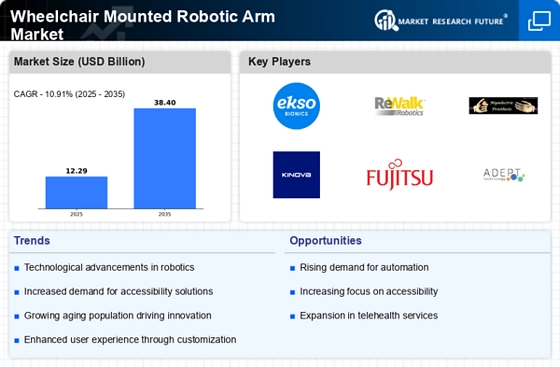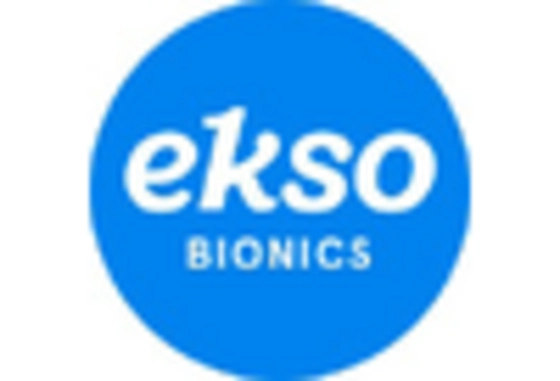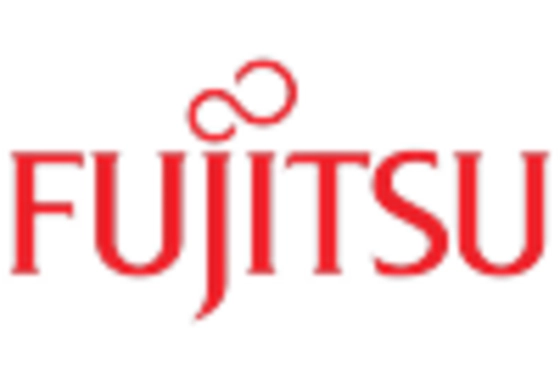Advancements in Robotics and AI
Technological advancements in robotics and artificial intelligence are transforming the Wheelchair Mounted Robotic Arm Market. Innovations in machine learning and sensor technology enable the development of more sophisticated robotic arms that can perform complex tasks with precision. For instance, the incorporation of AI allows these devices to learn from user interactions, adapting to individual needs and preferences. Market data indicates that the robotics sector is expected to witness substantial growth, with investments in AI-driven solutions projected to reach billions in the coming years. This trend suggests that as technology continues to evolve, wheelchair-mounted robotic arms will become more efficient, user-friendly, and accessible, thereby expanding their market reach and appeal.
Collaboration with Healthcare Systems
Collaboration between manufacturers of wheelchair-mounted robotic arms and healthcare systems is a crucial driver in the Wheelchair Mounted Robotic Arm Market. As healthcare providers increasingly recognize the benefits of integrating advanced assistive technologies into patient care, partnerships are forming to facilitate the adoption of these devices. Data suggests that healthcare systems are investing in rehabilitation technologies, with a focus on improving patient outcomes and reducing long-term care costs. This collaboration not only enhances the visibility of robotic arms in clinical settings but also fosters research and development efforts aimed at creating more effective solutions. As these partnerships grow, the market for wheelchair-mounted robotic arms is expected to expand, driven by a shared commitment to improving the lives of individuals with mobility challenges.
Rising Awareness of Disability Rights
The increasing awareness of disability rights and the push for inclusivity are significant drivers in the Wheelchair Mounted Robotic Arm Market. Advocacy groups and governmental initiatives are promoting the rights of individuals with disabilities, leading to greater demand for assistive devices that enhance autonomy. This societal shift is reflected in policy changes that support funding for assistive technologies, including robotic arms. Data from various health organizations indicates that there is a growing recognition of the importance of providing individuals with disabilities the tools necessary for independent living. As awareness continues to rise, it is likely that the market for wheelchair-mounted robotic arms will expand, driven by both consumer demand and supportive legislation.
Customization and Personalization Trends
Customization and personalization are becoming increasingly important in the Wheelchair Mounted Robotic Arm Market. Users are seeking solutions that cater to their specific needs and preferences, which has led manufacturers to focus on developing modular and adaptable robotic arms. This trend is supported by Market Research Future indicating that consumers are willing to invest in personalized assistive technologies that enhance their daily lives. The ability to customize features such as grip strength, range of motion, and control mechanisms can significantly improve user satisfaction and functionality. As manufacturers respond to this demand, the market for wheelchair-mounted robotic arms is likely to see a surge in innovative designs that prioritize user-centric approaches.
Increasing Demand for Assistive Technologies
The rising demand for assistive technologies is a pivotal driver in the Wheelchair Mounted Robotic Arm Market. As populations age and the prevalence of disabilities increases, the need for innovative solutions to enhance mobility and independence becomes more pronounced. According to recent data, the assistive technology market is projected to grow significantly, with a compound annual growth rate of approximately 7.5% over the next five years. This growth is likely to spur investments in the development of advanced robotic arms that can be mounted on wheelchairs, thereby improving the quality of life for users. The integration of robotics into assistive devices not only addresses functional limitations but also promotes social inclusion, which is increasingly recognized as a vital aspect of healthcare.

















Leave a Comment